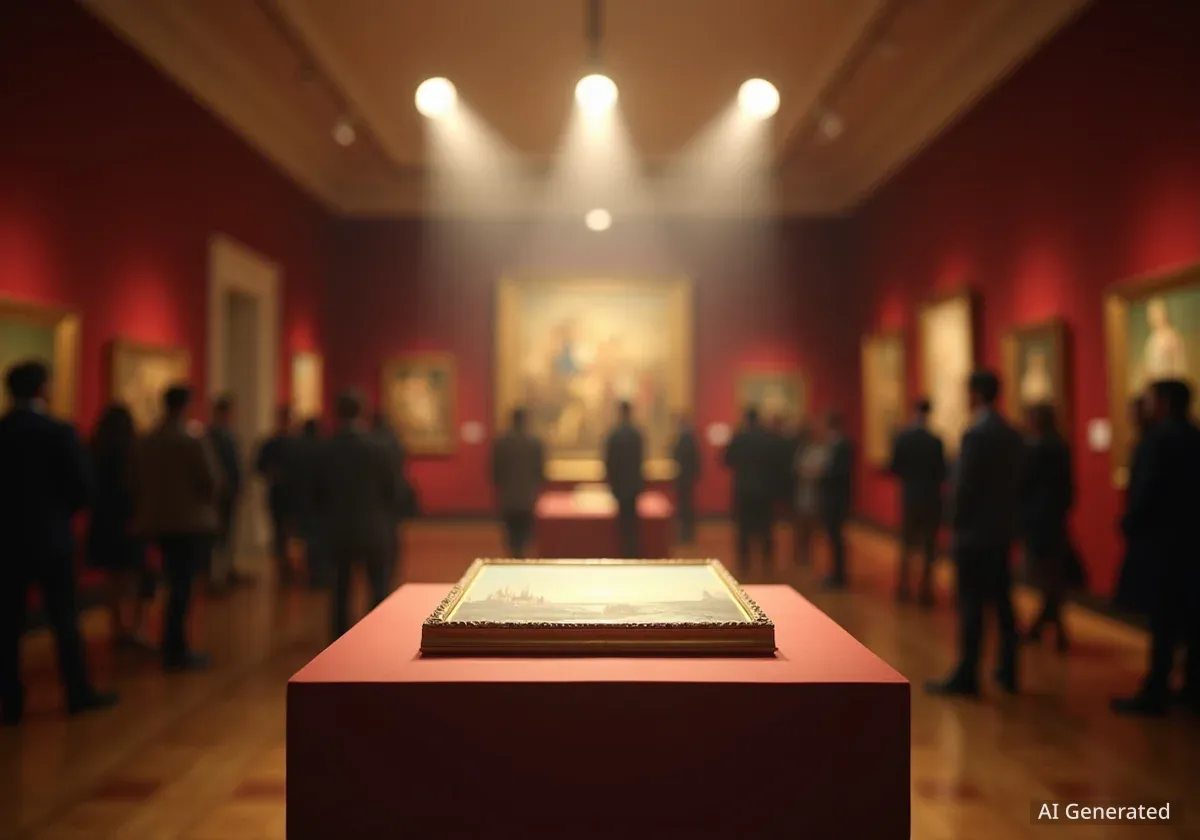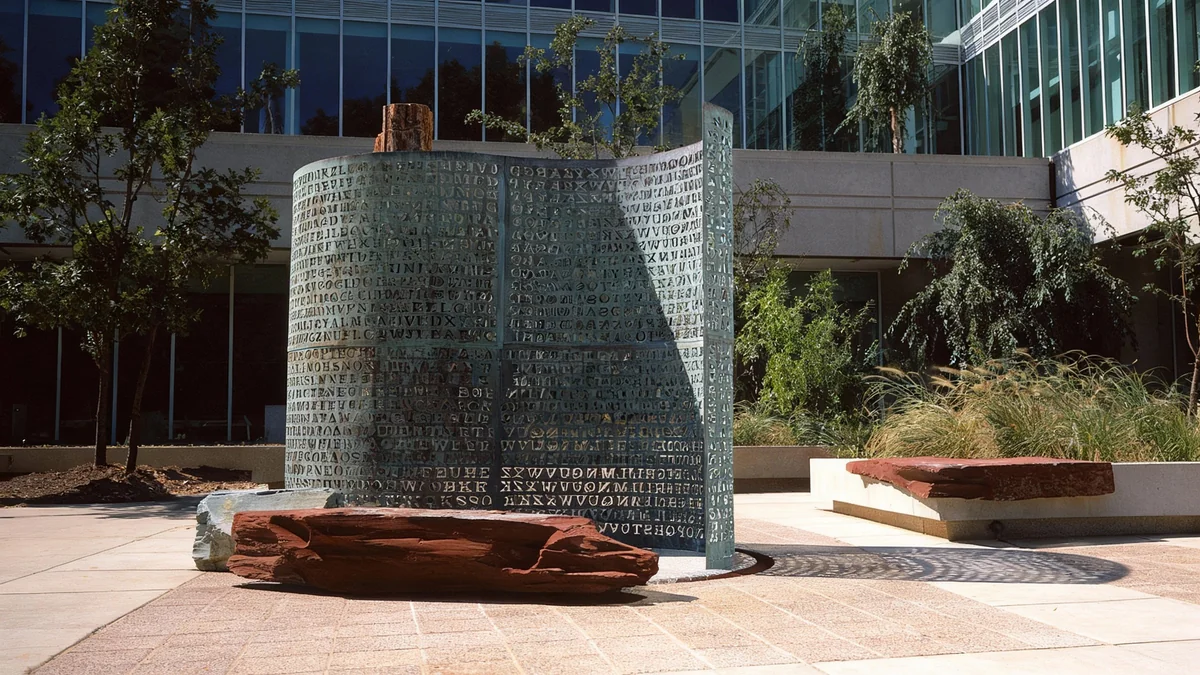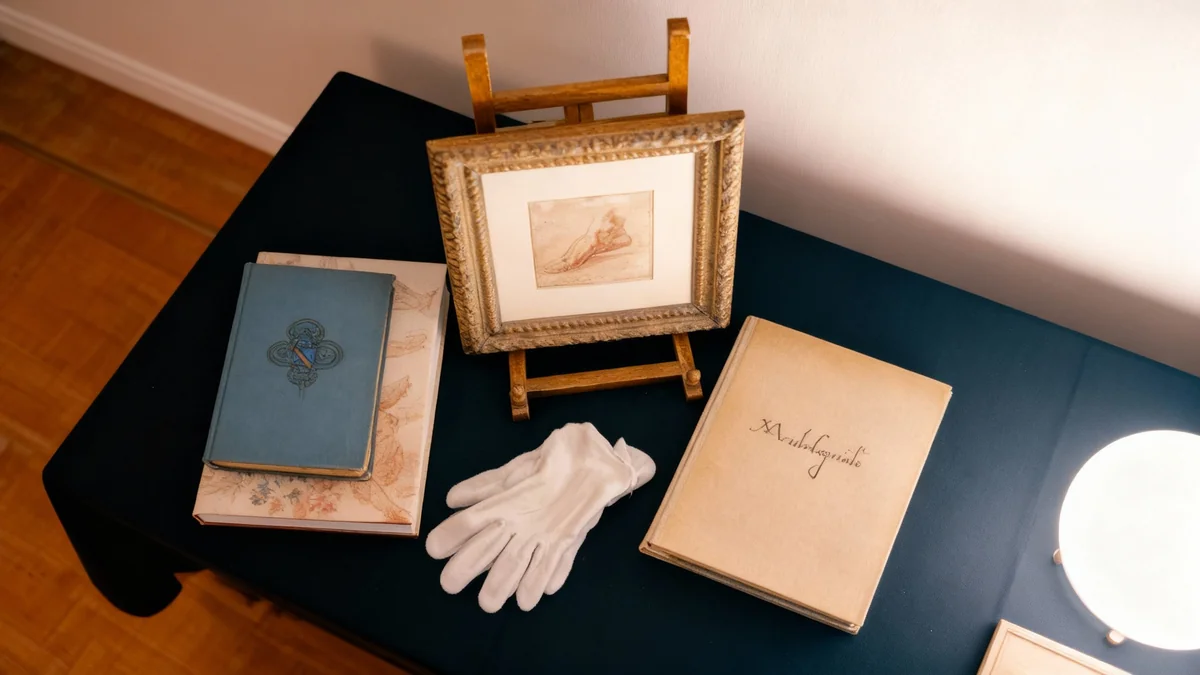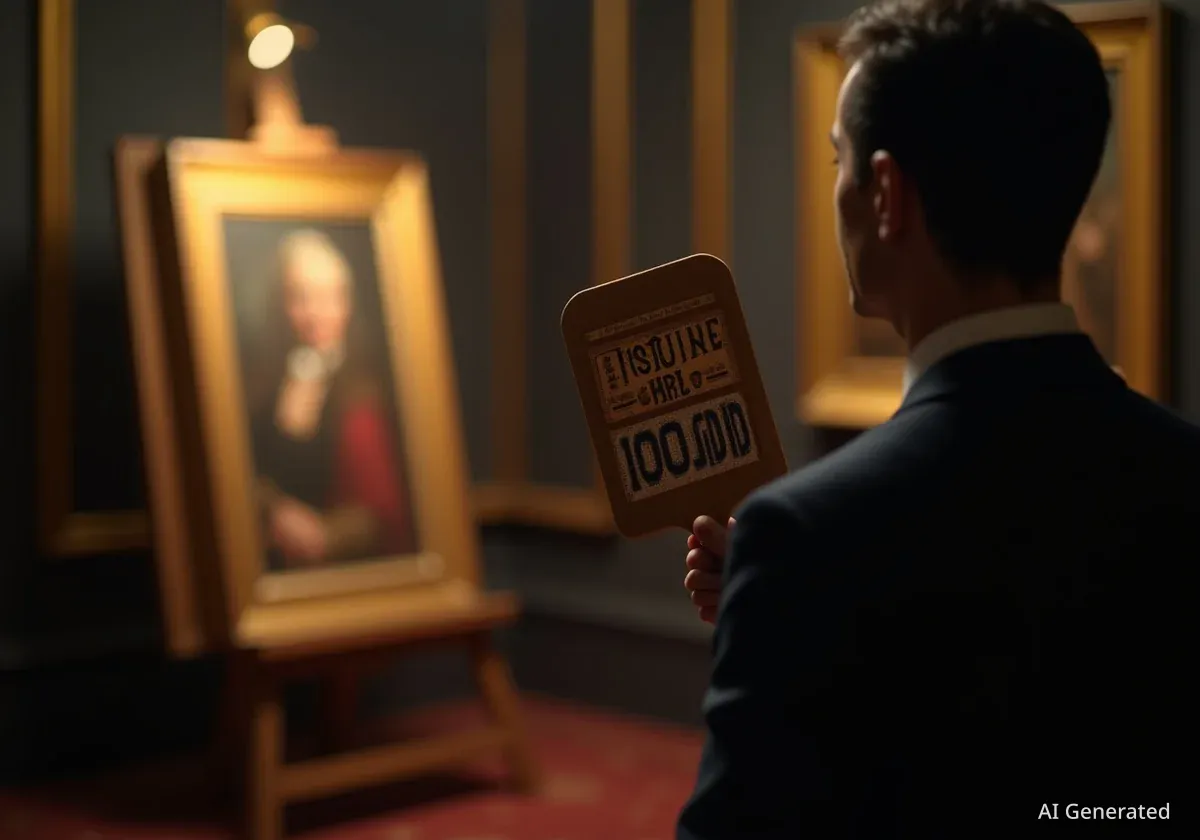A significant self-portrait by Frida Kahlo, titled El sueño (La cama), painted in 1940, is set to be auctioned at Sotheby's New York in November. The artwork carries an estimated value between $40 million and $60 million. If it sells at the higher end of this estimate, it could become the most expensive piece of art by a woman ever sold at auction, surpassing previous records.
Key Takeaways
- Frida Kahlo's 1940 self-portrait, El sueño (La cama), will be auctioned at Sotheby's New York.
- The painting is estimated to sell for $40 million to $60 million.
- A sale at the high estimate would make it the most expensive artwork by a woman sold at auction.
- This would break Kahlo's own record of $34.9 million set in 2021 for Diego y yo.
- The painting has not been publicly displayed for nearly 30 years.
Potential Record-Breaking Sale for Kahlo
The upcoming auction of El sueño (La cama) marks a major event in the art market. The painting's estimated value of up to $60 million places it in a rare category. This figure indicates strong interest in Kahlo's work and its historical significance.
Currently, the record for a work by a woman sold at auction is held by Georgia O’Keeffe’s Jimson Weed/White Flower No. 1, which sold for $44.4 million in 2014. If Kahlo's self-portrait reaches its high estimate, it would exceed O’Keeffe’s record by a substantial margin. It would also surpass Kahlo's own previous record of $34.9 million, achieved in 2021 for her work Diego y yo.
Notable Art Auction Records
- Frida Kahlo's current record: Diego y yo, sold for $34.9 million in 2021.
- Overall record for a woman artist: Georgia O’Keeffe’s Jimson Weed/White Flower No. 1, sold for $44.4 million in 2014.
The Story Behind El sueño (La cama)
Frida Kahlo painted El sueño (La cama) in 1940. This period was marked by significant personal and political upheaval in her life. Leon Trotsky, a close friend and former lover, had recently been assassinated. Additionally, Kahlo had separated from her husband, fellow artist Diego Rivera, during this time. These intense emotional experiences are often reflected in her art.
The painting depicts Kahlo lying in a bed, entangled in vines. Above her, a skeleton wired with dynamite floats, holding dried flowers. This imagery is characteristic of Kahlo's symbolic and often intense style, blending elements of surrealism with deeply personal narratives. The work captures a moment of vulnerability and internal turmoil.
"Frida Kahlo's art often served as a direct reflection of her life's challenges and triumphs. El sueño (La cama) is a powerful example of how she channeled her experiences into profound visual statements."
Frida Kahlo: A Brief Background
Born in Mexico City in 1907, Frida Kahlo began painting after a severe bus accident in 1925. Her art explored themes of pain, identity, and love. She created many self-portraits, often incorporating elements of Mexican folk art and surrealism. Kahlo's unique style and personal storytelling have made her one of the most recognized and influential artists of the 20th century.
Public Exhibition and Surrealist Market Trends
Before its auction in New York this November, El sueño (La cama) is embarking on a global tour. It will be exhibited in major cities including London, Abu Dhabi, Hong Kong, and Paris. This tour provides a rare opportunity for the public to view a painting that has largely remained out of sight for nearly three decades.
The sale also highlights a growing trend in the art market: the rising demand for Surrealist art. Sotheby’s and ArtTactic recently reported a significant increase in auction sales for this genre. Total sales jumped from $726 million to $800.7 million, and Surrealism's share of the global art market nearly doubled from 9.3% to 16.8%. This indicates a strong and profitable market for works by Surrealist artists.
Other Notable Surrealist Works at Auction
The upcoming Sotheby's auction features several other important Surrealist pieces alongside Kahlo's self-portrait. These include:
- Dorothea Tanning’s Interior with Sudden Joy (1951), estimated at $2–3 million.
- René Magritte’s La Représentation (1962), estimated at $4–6 million.
- René Magritte’s La Révélation du présent (1936), estimated at $2–3 million.
- Salvador Dalí’s Symbiose de la tête aux coquillages (1931), estimated at $2–3 million.
This collection underscores the current strength and appeal of the Surrealist art movement in the global market. Collectors and enthusiasts are showing increasing interest in these dreamlike and thought-provoking works.
Frida Kahlo's Enduring Legacy
Frida Kahlo's impact extends beyond her individual paintings. She is recognized for her unique artistic voice and her role in challenging traditional norms. Her self-portraits, such as The Two Fridas and Self-Portrait with Thorn Necklace and Hummingbird, are celebrated for their blend of surrealism, folk art, and raw emotion. These works have captivated audiences worldwide.
Kahlo's influence was recognized early in her career. In 1939, the Louvre Museum acquired one of her paintings, making her the first 20th-century Mexican artist to have work purchased by the prestigious institution. Decades later, her paintings continue to resonate with collectors, fans, and art lovers globally, solidifying her status as a cultural icon.
According to art historians, Kahlo's ability to fuse her personal suffering with broader themes of identity and cultural heritage contributes to the enduring appeal of her work. Her art remains a powerful statement on human experience.




